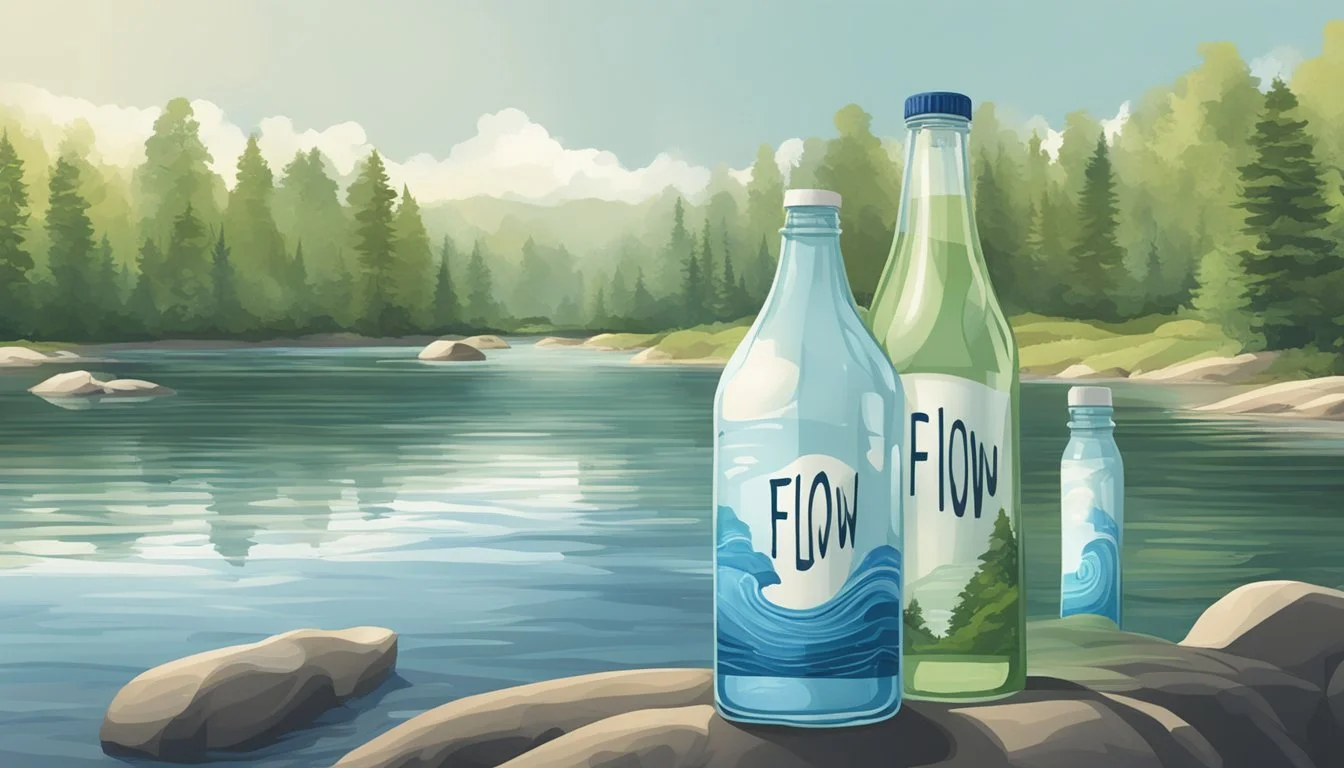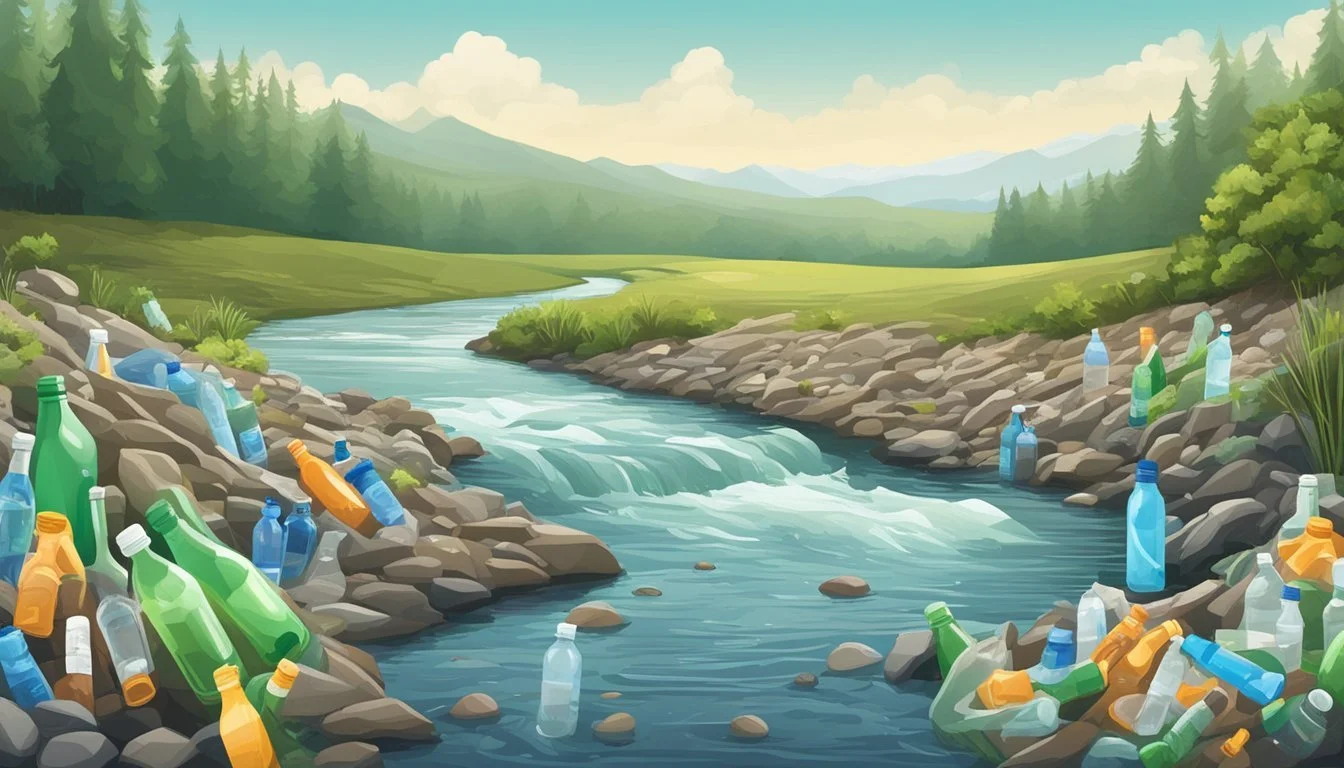Flow vs. Open Water
Comparing Bottled Water Quality
When it comes to choosing bottled water, consumers often weigh the options of brands like Flow and Open Water. Both offer unique benefits and cater to different preferences, but which one stands out? Flow provides an alkaline, mineral-rich option that boasts eco-friendly packaging, while Open Water offers ultra-purified water in aluminum bottles that are 100% recyclable.
For those who prioritize environmental sustainability, the choice can be influenced significantly by packaging materials. Plastic waste remains a massive concern with bottled water, with many looking to alternatives like aluminum or biodegradable packaging. Tap water, though often convenient and eco-friendly, is frequently bypassed in favor of the perceived purity and taste of bottled options.
Consumers seeking a balance between health benefits and environmental consciousness will find both Flow and Open Water intriguing choices. Each brand has its strengths, whether it’s the mineral content and pH balance of Flow or the highly recyclable nature of Open Water's packaging. The decision ultimately depends on priorities, whether it’s based on taste, health benefits, or environmental impact.
Understanding Bottled Water
Bottled water comes in various types, each with unique properties and health benefits. It's important to understand the regulations and safety standards that ensure quality, as well as the environmental impact of plastic bottles.
Types of Bottled Water
Spring Water: Sourced from underground formations where water flows naturally to the surface. Often contains minerals and has a distinct taste.
Purified Water: Undergoes processing to remove impurities and typically includes treatments like distillation, deionization, or reverse osmosis.
Mineral Water: Contains specific proportions of minerals, such as calcium and magnesium, beneficial for health. Must come from protected underground sources.
Sparkling Water: Carbonated by natural or added CO2, offering a fizzy experience. Often consumed for its refreshing qualities.
Flavored Water: Infused with flavors and sometimes contains added sugars or sweeteners. Popular for those seeking variety.
Regulation and Safety Standards
Food and Drug Administration (FDA) regulates bottled water as a packaged food product.
Environmental Protection Agency (EPA) oversees tap water through the Safe Drinking Water Act (SDWA), ensuring public drinking water safety.
International Bottled Water Association (IBWA) sets additional standards. Members adhere to stringent quality controls and regular audits.
Quality and Safety: Bottled water must meet specific pH levels and contaminant standards set by these regulatory bodies.
Health and Safety: Some regulations focus on removing harmful contaminants while preserving beneficial minerals.
Bottled Water Brands
Dasani: Known for its purified water with added minerals for taste, falls under Coca Cola's portfolio.
Aquafina: A PepsiCo brand, providing purified water with a balanced pH and added minerals.
Evian: Offers mineral water sourced from French Alps, celebrated for its natural purity and mineral content.
Perrier: Sparkling mineral water with natural carbonation, popular for its refreshing bubbles.
Fiji Water: Artesian water from Fiji, containing a high mineral content and alkaline pH, marketed for its smooth taste.
Environmental Concerns
Plastic bottles contribute significantly to plastic waste. Recycling rates for plastic bottles remain low, leading to increased landfill.
Production and transportation of bottled water involve significant carbon footprints. Using reusable bottles and consuming tap water helps reduce environmental impact.
Plastic waste pollutes oceans and harms marine life, urging a shift towards sustainable practices and stricter environmental protection measures.
Analyzing Tap Water
Municipal tap water is subject to rigorous regulation and treatment before it reaches the consumer. The following sections delve into sources, contaminants, filtering methods, and health evaluations.
Source and Treatment
Municipal water is usually sourced from surface water (lakes, rivers) or groundwater (wells, aquifers). Water treatment plants process this water to make it safe for public consumption. Treatment typically includes coagulation, sedimentation, filtration, and disinfection. Coagulation removes particles; sedimentation allows particles to settle; filtration removes smaller particles, and disinfection eliminates microbes. These steps ensure the water meets safety standards set by the EPA.
Tap Water Contaminants
Despite treatment, tap water may still contain potential contaminants. Heavy metals like lead can leach from old plumbing. Industrial pollutants like pesticides and pharmaceutical residues may also be present, especially in agricultural regions. Microbes such as bacteria and viruses can sometimes enter through breaches in the water infrastructure. Regular water quality reports help monitor and identify these contaminants, keeping the public informed.
Filtered Tap Water Options
Many households use water filters to remove contaminants that municipal processes might miss. Common methods include activated carbon filters, reverse osmosis, and UV purification. Activated carbon filters are effective at removing chlorine, sediment, and volatile organic compounds. Reverse osmosis systems can remove more contaminants, including certain heavy metals and microbes. UV purification is particularly effective against bacteria and viruses, ensuring safer drinking water at home.
Health and Safety Evaluations
Health and safety of tap water are assessed through regular testing and stringent regulation. Water quality reports provide transparency, detailing the levels of various contaminants. Studies indicate that, for most regions, tap water is just as safe as bottled water. Public health agencies and regulatory bodies like the EPA and WHO set standards to minimize health risks from contaminants in drinking water, ensuring reliable access to safe water.
Comparing Costs and Convenience
When choosing between Flow and Open Water bottled water, it is essential to consider both the financial investment and the practicality of obtaining and using each type. The subsequent analysis delves into the specifics of cost and ease of access and use.
Expense Analysis
Flow bottled water typically falls within mid-to-high price points, largely due to its premium branding and eco-friendly packaging. Flow markets itself with a focus on sustainability, often using Tetra Pak cartons, which contribute to its higher price.
In contrast, Open Water bottled water often includes the cost of its aluminum packaging. While environmentally friendly, this material also generally results in a higher retail price. According to recent data, bottled water prices can range from $1 to $3 per bottle, influenced by factors such as packaging and brand positioning.
For households, opting for Flow or Open Water individually can potentially increase annual water expenses significantly. Consumers need to balance the benefits of premium bottled water with its impact on their budget.
Ease of Access and Use
Both Flow and Open Water strive for extensive market availability. Flow is commonly found in major supermarkets, health food stores, and online platforms, making it accessible for a wide array of consumers. Its Tetra Pak cartons are lightweight and convenient for on-the-go usage.
Open Water, with its aluminum packaging, is marketed in various retail outlets, including eco-friendly stores and online shops. Its resealable aluminum bottles cater to those who prioritize sustainability and durability.
The infrastructure for recycling Tetra Pak and aluminum also impacts convenience. Tetra Pak recycling is available in many urban areas, while aluminum boasts a robust recycling infrastructure, adding a layer of convenience for environmentally conscious consumers.
By critically evaluating both cost implications and accessibility, consumers can make informed decisions about whether Flow or Open Water aligns better with their priorities.
Health Implications and Benefits
Bottled water choices can have varying impacts on health, particularly related to the nutrient content, potential contaminants, and overall hydration benefits. Each aspect influences the decision-making process.
Nutritional Value
Mineral content in bottled water can enhance nutritional intake. Brands may contain calcium, magnesium, and other electrolytes crucial for bodily functions. Calcium supports bone health, while magnesium is vital for muscular and neurological functions. Some bottled waters are fortified with these minerals, providing an added health benefit compared to low-mineral tap water. When choosing bottled water, opt for those listing essential minerals on their labels to maximize health benefits.
Contaminant Health Effects
Health risks from contaminants in bottled water can vary. Potential toxins such as cryptosporidium and endocrine-disrupting chemicals (EDCs) may pose threats. Cryptosporidium, a waterborne parasite, can cause gastrointestinal issues. EDCs, found in some plastic bottles, may interfere with the hormonal system. Contaminants like nervous system-damaging agents and cancer-linked chemicals should be critically considered. Regular testing and certification labels help ensure safety standards are met, minimizing health risks.
Hydration and Wellness
Hydration is a fundamental aspect of wellness. Bottled water provides a convenient and reliable hydration source, essential for maintaining heart health and overall physiological function. Proper hydration aids in nutrient transport, temperature regulation, and joint lubrication. Electrolytes in some bottled waters can further support hydration by replenishing what's lost through sweat. Staying hydrated is linked to improved cognitive function, mood stability, and physical performance.
Environmental and Sustainability Considerations
Different aspects of bottled water production, including packaging and water source preservation, have significant environmental impacts and sustainability concerns.
Packaging and Disposal
Plastic bottles are the most common packaging for bottled water. They contribute significantly to plastic waste, as only a portion of these bottles are recycled. Most end up in landfills or the ocean, posing a long-term environmental issue.
The production of plastic bottles, primarily from PET (polyethylene terephthalate), involves substantial energy and resource consumption. This process releases greenhouse gases, exacerbating climate change.
Recycling rates for plastic bottles vary by region, but the overall rates are low. Effective recycling programs and improved consumer practices are essential to mitigating the adverse environmental impact. However, changing consumer behavior and improving infrastructure remain significant challenges.
Water Source Preservation
Bottled water companies frequently source their water from natural springs or municipal supplies. The extraction of water from these sources can lead to depletion and harm local ecosystems. Sustainable management practices are crucial to ensure that water resources are not over-exploited, preserving them for future generations.
Over-extraction from natural springs can disrupt local water tables and negatively affect wildlife habitats. Companies must adhere to strict regulations and sustainable practices to minimize these impacts.
Consumers can also play a role by choosing brands that commit to sustainable sourcing practices, ensuring the long-term viability of the water sources they rely on.
Consumer Perceptions and Reality
Consumer perceptions of bottled water are heavily influenced by marketing, and blind taste tests often reveal the difference between perceived and actual taste preferences.
Marketing Influence on Water Selection
Marketing plays a critical role in shaping consumer attitudes towards bottled water. Brands leverage terms like "pure" and "natural" to create a perception of superior quality.
Health claims are also frequently used, suggesting that bottled water offers a healthier alternative to tap water.
Research indicates that 86 percent of Americans have a positive opinion of bottled water, often believing it to be safer and of higher quality due to these marketing efforts.
Prominent companies invest substantially in advertising to convince consumers that their product is not only convenient but also the better choice compared to tap water or other brands.
Blind Taste Tests and Preferences
Blind taste tests have been conducted to evaluate the actual taste differences between bottled water brands and tap water.
Interestingly, a significant portion of consumers cannot distinguish between bottled and tap water when brand influence is removed.
Studies have shown that 64% of bottled water is essentially repackaged tap water. This disconnect between consumer perceptions and reality underscores how branding can skew preferences.
Furthermore, incidents of bottled water containing microplastics challenge the idea of bottled water being purer. These tests reveal that marketing often plays a more significant role in consumer preference than actual taste differences or quality.
Alternatives and Emerging Trends
Bottled water innovation is geared toward improving quality and sustainability. With a focus on eco-friendly solutions, new trends highlight advancements in purification techniques and packaging options.
Innovations in Bottled Water
Recent innovations in bottled water focus on enhanced formulations and packaging improvements. Brands like Essentia and Core Hydration have introduced water with added electrolytes and modified pH levels for perceived health benefits.
Mitte presents a cutting-edge system that replicates the mineral content of natural water sources. Additionally, there is a growing trend for bottled water in eco-friendly packaging, such as aluminum and stainless steel bottles, which are reusable and recyclable, diminishing the need for single-use plastics.
Development of Water Purification Technologies
Advancements in purification technologies have significantly impacted the bottled water industry. Modern techniques like reverse osmosis and distillation are now commonplace, ensuring the removal of contaminants and impurities to produce high-quality drinking water.
Recent studies show many bottled water brands are essentially filtered tap water, yet they employ sophisticated filtration systems to enhance purity. Companies are continuously developing new technologies to improve filtration efficiency and maintain the integrity of water quality.
Rising Preferences for Eco-Friendly Options
A significant shift toward environmental sustainability has influenced consumer preferences for bottled water. Reusable water bottles made of materials like aluminum and stainless steel are increasingly popular, as they reduce plastic waste and are more durable.
Eco-conscious brands are prioritizing recyclable materials like PET #1 plastic and HDPE #2 plastic for their packaging. There is also a rise in companies offering refillable water stations, encouraging consumers to use their reusable containers instead of purchasing new single-use bottles.
This trend addresses growing environmental concerns and promotes a sustainable approach to hydration.
More About Flow
Flow vs Whole Foods Italian Still Mineral water: Which Bottled Water is Better?
Mountain Valley Spring Water vs Flow: Which Bottled Water is Better?
More About Open Water
Aqua Carpatica vs Open Water: Which Bottled Water is Better?
Cascade Mountain vs Open Water: Which Bottled Water is Better?
Core Hydration vs Open Water: Which Bottled Water is Better?
Crystal Geyser vs Open Water: Which Bottled Water is Better?
Hawaii Volcanic vs Open Water: Which Bottled Water is Better?
Hawaiian Springs vs Open Water: Which Bottled Water is Better?
Icelandic Glacial vs Open Water: Which Bottled Water is Better?
Mountain Valley Spring Water vs Open Water: Which Bottled Water is Better?
Nestle Pure Life vs Open Water: Which Bottled Water is Better?
Open Water vs Kirkland Signature: Which Bottled Water is Better?
Open Water vs Whole Foods 365: Which Bottled Water is Better?
Richard's Rainwater vs Open Water: Which Bottled Water is Better?
San Pellegrino vs Open Water: Which Bottled Water is Better?
Solan de Cabras vs Open Water: Which Bottled Water is Better?
Talking Rain AQA vs Open Water: Which Bottled Water is Better?
Whole Foods Italian Still Mineral water vs Open Water: Which Bottled Water is Better?








